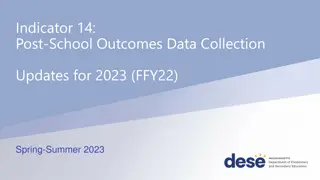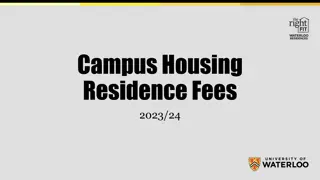
Network Simulation Course on IPv4 Addressing and IP Classes
Explore the fundamentals of IPv4 addressing and IP classes in the context of network simulation. Learn about address classes, decimal representations, network IDs, broadcast addresses, and more to enhance your understanding of networking concepts.
Download Presentation

Please find below an Image/Link to download the presentation.
The content on the website is provided AS IS for your information and personal use only. It may not be sold, licensed, or shared on other websites without obtaining consent from the author. If you encounter any issues during the download, it is possible that the publisher has removed the file from their server.
You are allowed to download the files provided on this website for personal or commercial use, subject to the condition that they are used lawfully. All files are the property of their respective owners.
The content on the website is provided AS IS for your information and personal use only. It may not be sold, licensed, or shared on other websites without obtaining consent from the author.
E N D
Presentation Transcript
Computer Techniques Engineering Department College of Engineering and Technology Al-Mustaqbal University Network Simulation Course BY Dr. Muamer N. Mohammed 1
Lecture6 Addressing & IP Class 2
IPv4 Address Classes Class D Addresses A Class D address begins with binary 1110 in the first octet. First octet range 224 to 239. Class D address can be used to represent a group of hosts called a host group, or multicast group. Class E Addresses First octet of an IP address begins with 1111 First octet range 240 to 255. Class E addresses are reserved for experimental purposes and should not be used for addressing hosts or multicast groups. 3
IP Addresses as Decimal Numbers ip=w.x.y.z 4
Network IDs and Broadcast Addresses An IP address such as 176.10.0.0 that has all binary 0s in the host bit positions is reserved for the network address. An IP address such as 176.10.255.255 that has all binary 1s in the host bit positions is reserved for the broadcast address. 5
IP ADDRESSING 7 Application Format x x x x x x x x . x x x x x x x x . x x x x x x x x . x x x x x x x x where x is either 0 or 1 6 Presentation 5 Session Example 1: 1 1 1 1 1 1 1 1 . 1 1 1 1 1 1 1 1 . 0 0 0 0 0 0 0 0 . 0 0 0 0 0 0 00 4 Transport 255.255.0.0 3 Network Example 2: 2 DataLink 1 1 1 1 1 1 1 1 . 1 1 1 1 1 1 1 1 . 1 0 0 0 0 0 0 0 . 0 0 0 0 0 0 00 255.255.192.0 1 Physical 6
IP ADDRESSING 7 Application NetworkAddress 6 Presentation Example 1: IP address of computer 180.100.7.1 Mask Network address 5 Session 255.255.0.0 180.100.0.0 4 Transport Example 2: 3 Network IP address of computer 180.100.7.1 Mask Network address 255.255.255.0 180.100.7.0 2 DataLink Example 3: 1 Physical IP address of computer 180.100.7.2 Mask Network address 255.255.192.0 180.100.0.0 7
IP ADDRESSING 7 Application Mask 6 Presentation Valid mask are contiguous 1 s from left to right. 5 Session Examples: Valid 255.0.0.0 255.255.0.0 255.255.255.0 4 Transport 3 Network Invalid 255.1.0.0 255.0.255.0 255.255.64.0 200.255.0.0 2 DataLink 1 Physical 8
IP addressing Q: how does an ISP get block of addresses? A: ICANN: Internet Corporation for Assigned Names and Numbers http://www.icann.org/ allocates addresses manages DNS assigns domain names, resolves disputes 9
IP addresses: how to get one? Q: How does a host get IP address? hard-coded by system admin in a file Windows: control-panel->network->configuration->tcp/ip- >properties UNIX: /etc/rc.config DHCP: Dynamic Host Configuration Protocol: dynamically get address from as server plug-and-play 10
IP addresses: how to get one? Q: how does network get subnet part of IP addr? A: gets allocated portion of its provider ISP s address space ISP'sblock 11001000 00010111 00010000 00000000 200.23.16.0/20 Organization 0 Organization 1 Organization 2 ... 11001000 00010111 00010000 00000000 11001000 00010111 00010010 00000000 11001000 00010111 00010100 00000000 .. 200.23.16.0/23 200.23.18.0/23 200.23.20.0/23 . . Organization 7 11001000 00010111 00011110 00000000 200.23.30.0/23 11






















